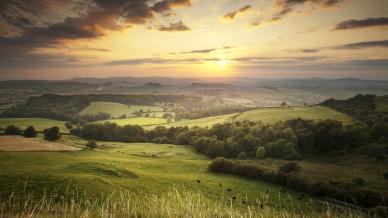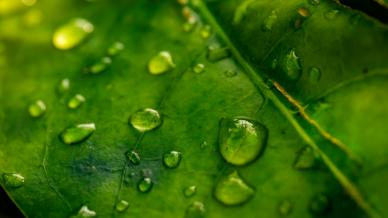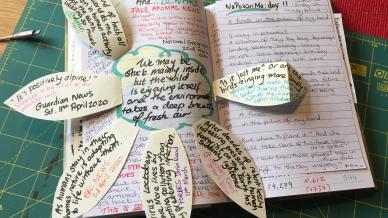With days getting warmer and longer, now is the perfect time to get out in your local countryside and surround yourself with nature. To celebrate spring, and to give you a little nudge to get on your walking boots, we're bringing you a handful of tips and activities to do while out and about.
Scroll down below to see:
- 5 benefits of being in nature
- 5 trees to spot and how to recognise them
- 5 things to take with you on a walk
- 5 birds to look out for
- 5 best nature apps
5 benefits of being in nature
Reduces stress
Being in nature is a great form of de-stressing and relaxing. Studies have shown that being in nature helps to lower your heart rate, brain waves and breathing and reduce your stress.
Improves your sleep quality
Spending more time outdoors has been shown to help you sleep better, with the natural light helping to reset your circadian rhythms which controls your sleep-wake cycle.
Promotes activity
Nature's not just great for your mental wellbeing, but also your physical too. For those of you that aren't regular ramblers; keep things simple with short daily walks around your local park and slowly increase the time you spend walking - who knows, you might surprise yourself at how much you enjoy it - even from day one!
Great for your mood
A Finnish study found that spending just 15 minutes a day in nature helped individuals feel emotionally restored, while a 90-minute walk can help lower levels of rumination, or 'negative mind chatter'.
Helps with creativity and problem solving
It's not hard to see the correlation between creativity and spending time in nature - after all, you only need to look to find inspiration all around - but did you know that studies have also found that it helps with problem-solving?
5 trees to look out for
English Oak
Leaves: Round-lobed with a short leaf stalk, accompanied by dangling catkins during spring and acorns in autumn
Bark: Rough with deep grooves. Young oaks will have a silvery brown colouring, older oaks will be a darker brown complexion.
Overall appearance: Thick trunk and round, spreading crown which is very lush and green during peak season. Grows around 40 metres high.
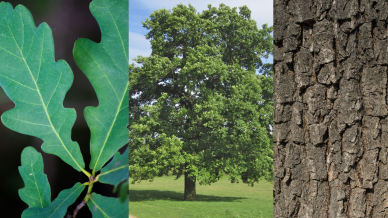
Ash
Leaves: Made up of 7-13 paired tooth-edged leaflets (this is a pinnate leaf), attached to the main stalk of the leaf.
Bark: Silvery grey markings, with older trees displaying vertical fissures.
Overall appearance: Grow up to 40-45 metres in height. The ash tree's very black buds are one of its most defining features - especially against the grey bark.
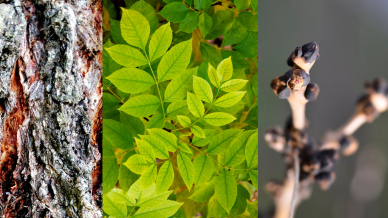
Sweet Chestnut
Leaves: Leaves are around 16-28cm in length, tooth-edged and with a pointed tip. Bright green and quite glossy, often gathered in paired bunches of around 20. Features long yellow catkins in late June and July, as well as its characteristic chestnuts in Autumn, encased in spiky cases.
Bark: Smooth texture with a grey-purple colouring. As it matures, the trunk will have vertical fissures. get older,
Overall appearance: A deciduous tree, the sweet chestnut can reach 35 metres in height and can have a very thick trunk.
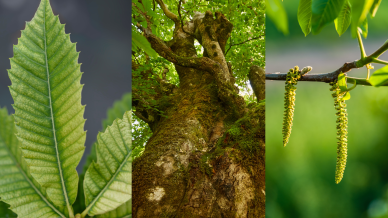
Silver Birch
Leaves: Light green, tooth-edged and triangle-shaped. These trees also have catkins from April to May; either long and yellow-brown in colouring (a male catkin) or short and bright green (a female catkin).
Bark: White in colouring and often sheds layers. Older trees have black and rugged bases and dark, diamond-shaped fissures in their trunks.
Overall appearance: Mature birch trees grow up to 30 metres.
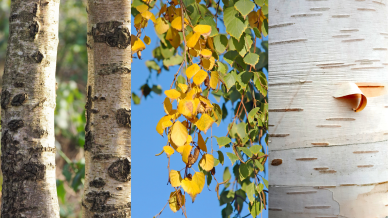
Western Hemlock
Leaves: Soft and flat needle-like leaves with rounded tips and 2 white bands on the underside.AN evergreen tree, the crushed needles smell like grapefruit.
Bark: Dark brown with rugged ridges. One of its defining features is its long drooping branch tips
Overall appearance: Conical shape with a narrow crown, grows up to 45 metres. Often found in upland forests and moist climates.
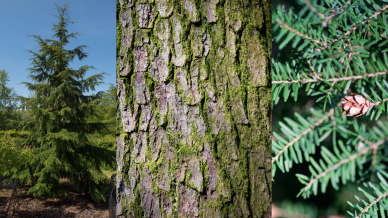
5 things to take on a nature walk
- Camera
- Drink and snacks
- Map or phone for navigation
- Hat and suntan lotion
- Plastic bag to pick up any rubbish left
5 common British birds to look out for
Goldcrest
Best identified by: A bright yellow or orange stripe on its head.
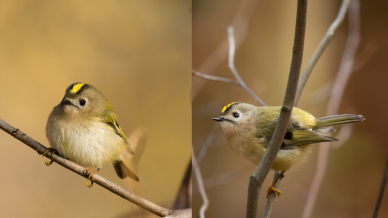
Great spotted woodpecker
Best identified by: White markings and spots on its wings and tail, along with bright red patches.
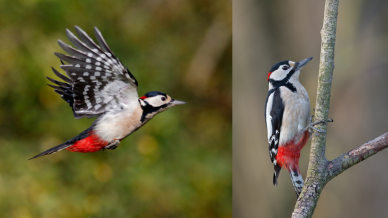
Swifts
Best identified by: Its long curved wings and a pale patch on its throat.
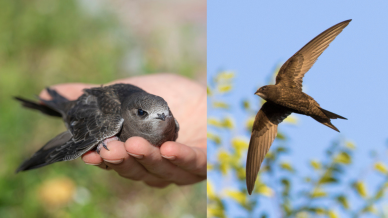
Goldfinch
Best identified by: Its distinctive red face and bright yellow patches on its wings.
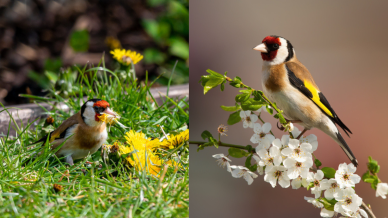
Long-tailed tit
Best identified by: Its long black and white tail and striped markings on its head.
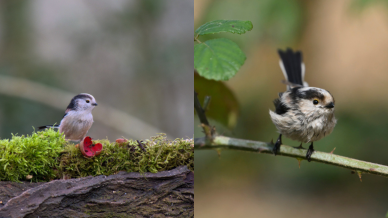
5 best free walking and nature apps
MapMyWalk GPS
A great free walking app, MapMyWalk tracks the time and distance of your walk, along with the pace and speed of your jaunt, which it then saves for you to look back on.
Fitbit App Mobile Tracker
No, you don't need a Fitbit to have a Fitbit app. Handy for tracking your rambles via GPS as well as your daily steps.
Footpath Route Planner
One of the best apps for walkers, this beauty is perfect for planning your journey. All you have to do is trace the route that you want to take with your finger and Footpath will show you all the trails and roads available.
iNaturalist
This nature app is designed to record observations of plants and animals in nature using photographs.
Go Jauntly
An environmental app, Go Jauntly helps you find the greenest routes to get from A to B, create and share your own walks and discover local places to eat.
